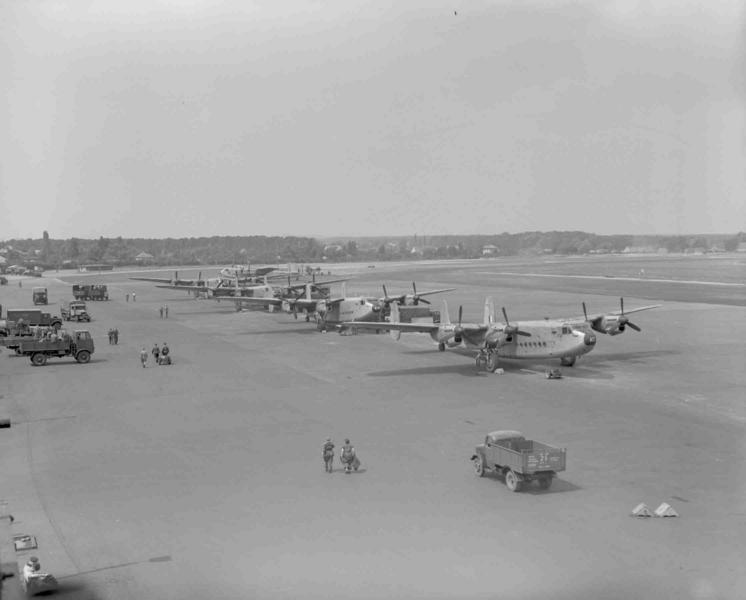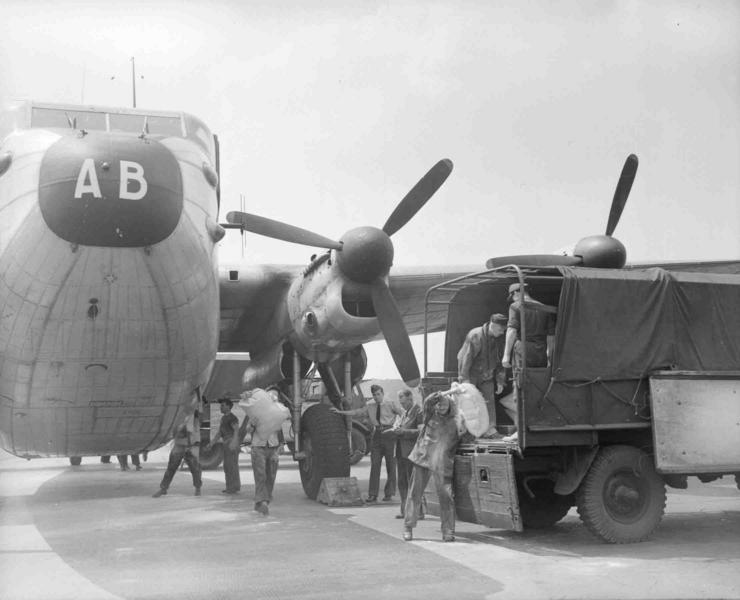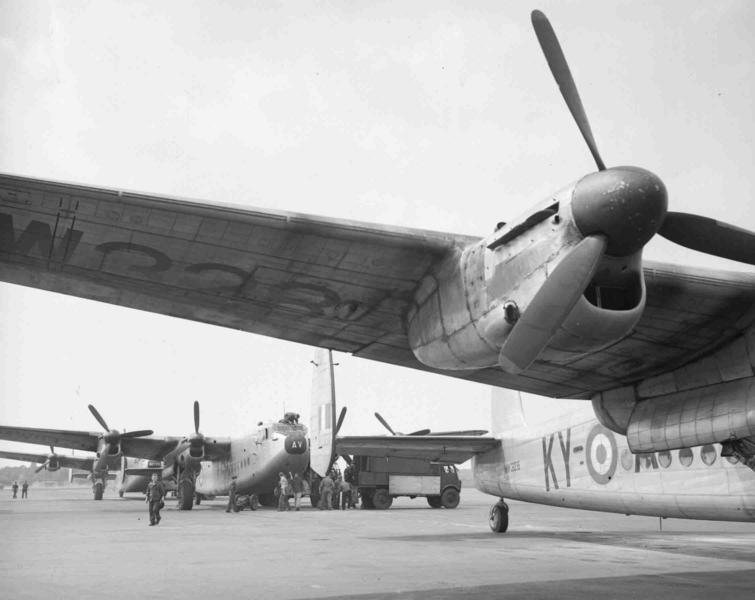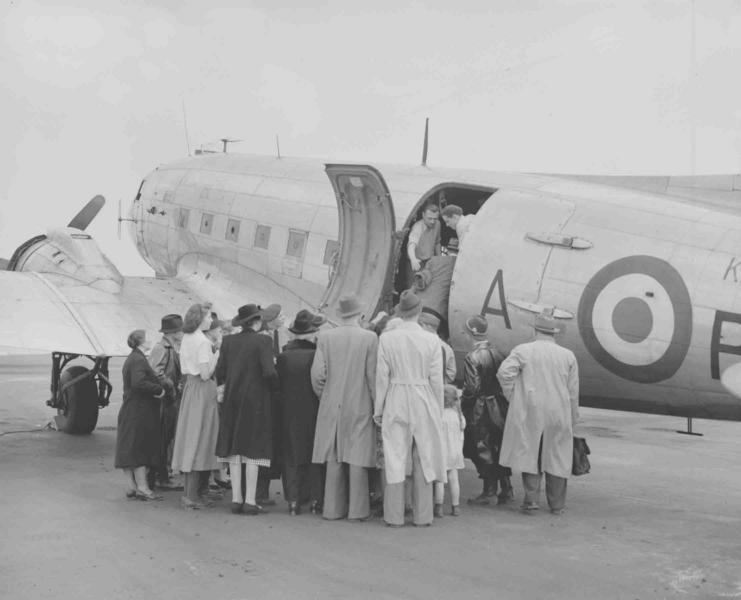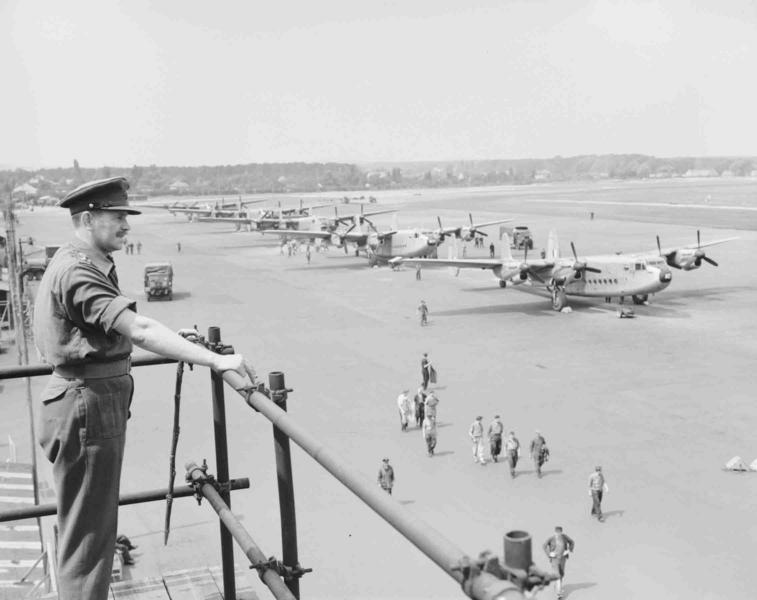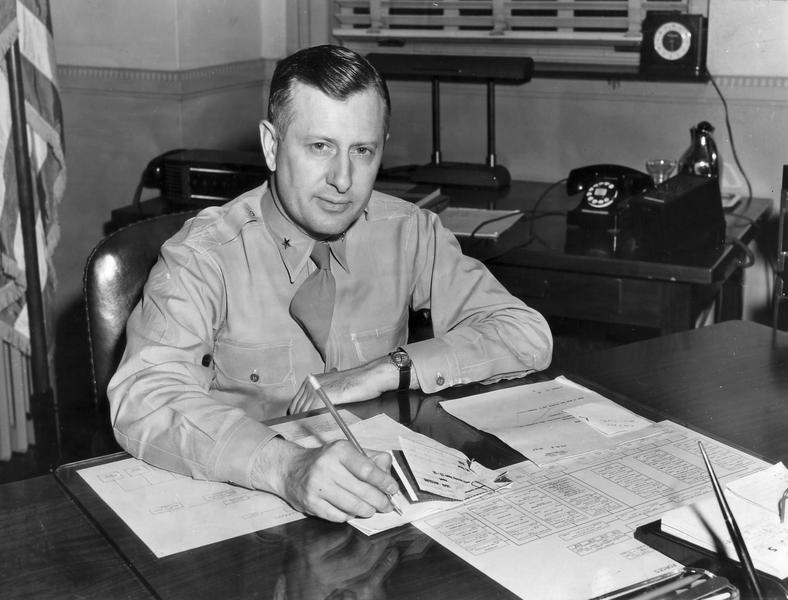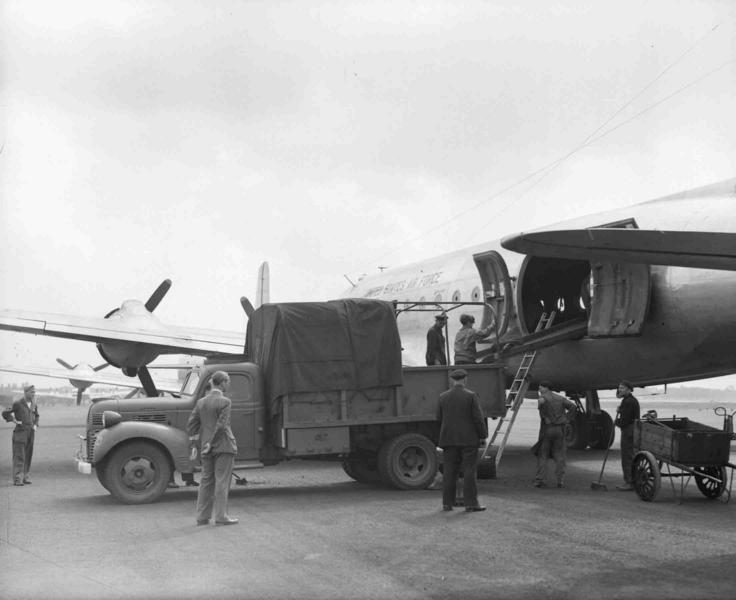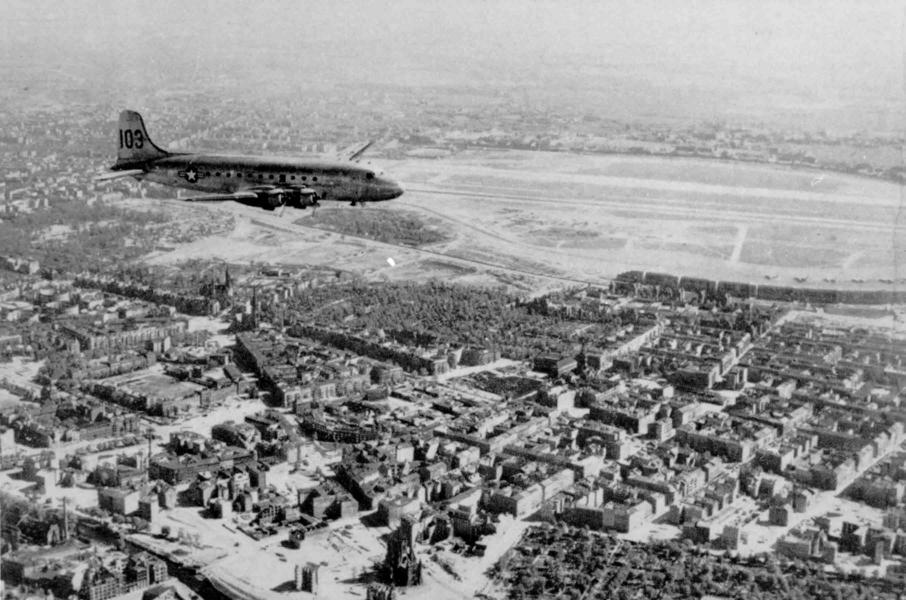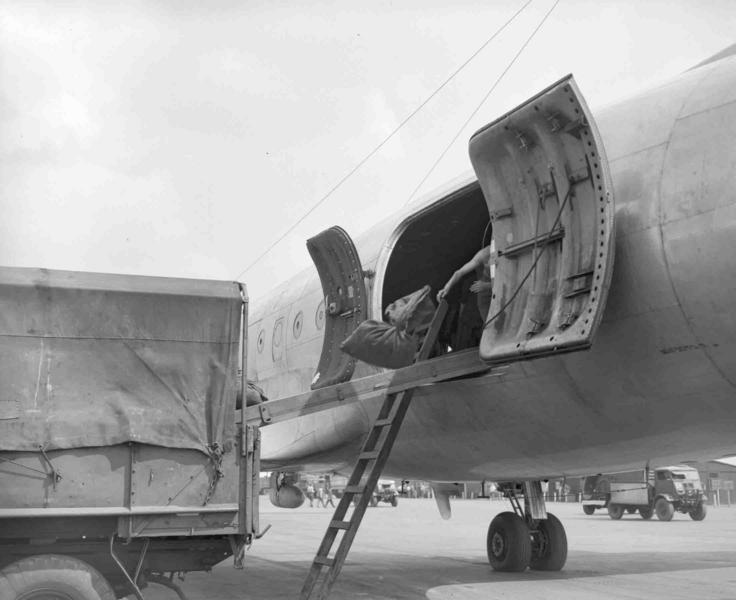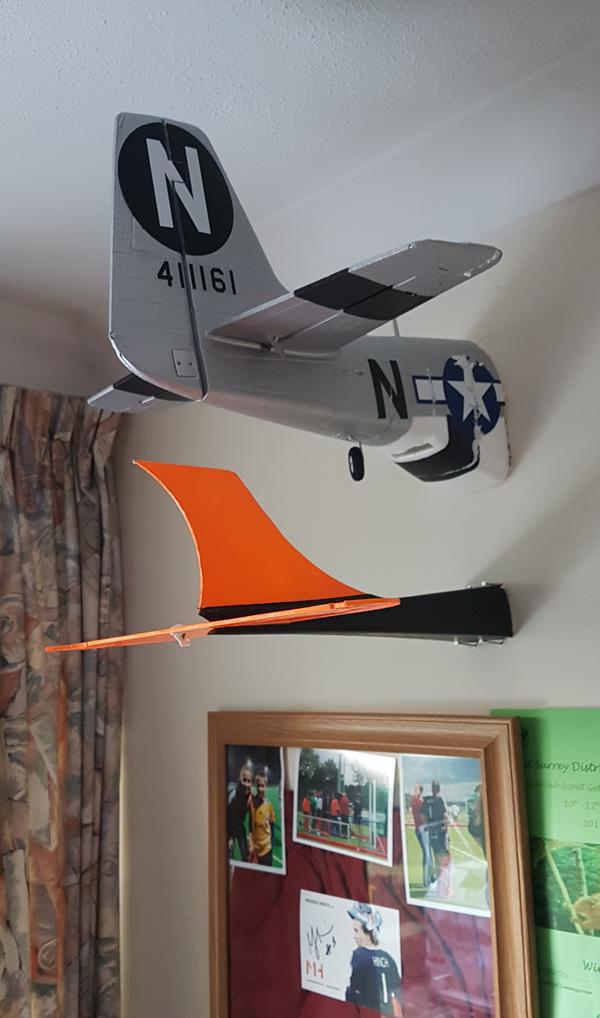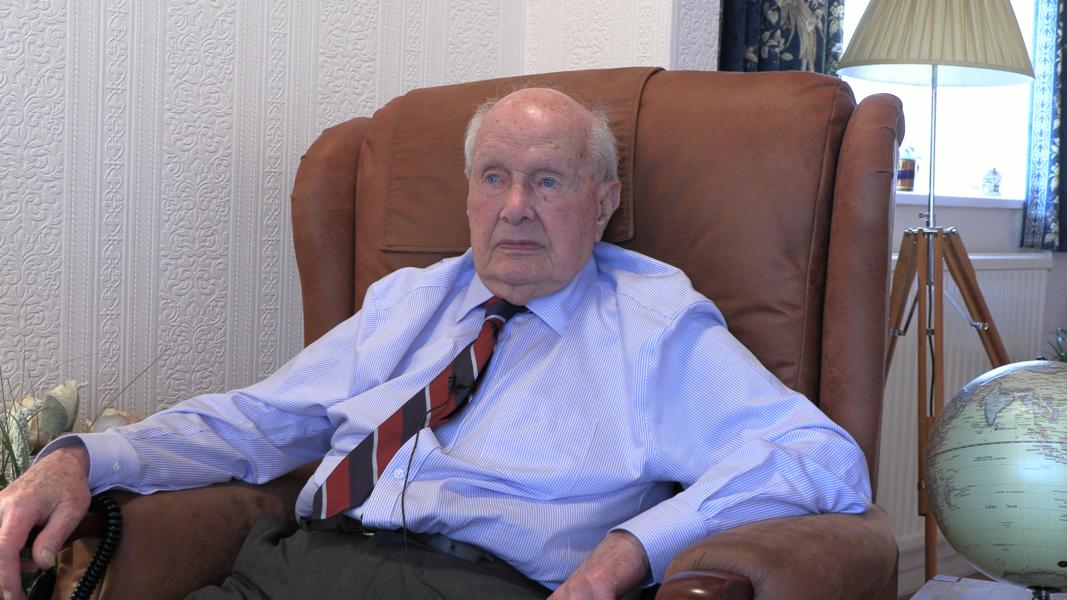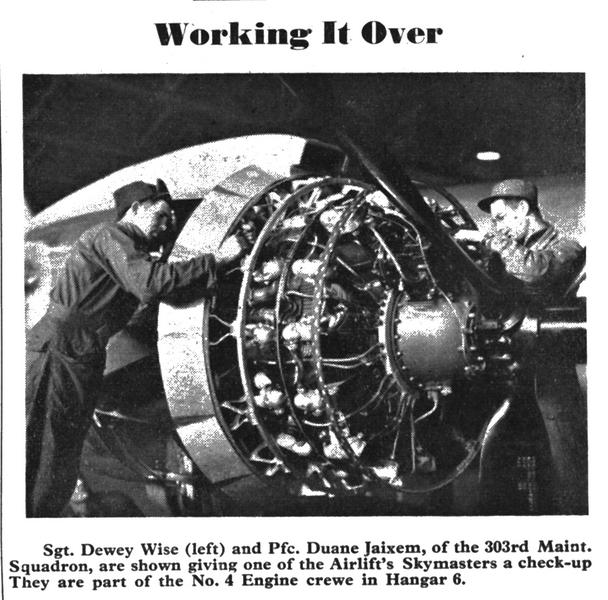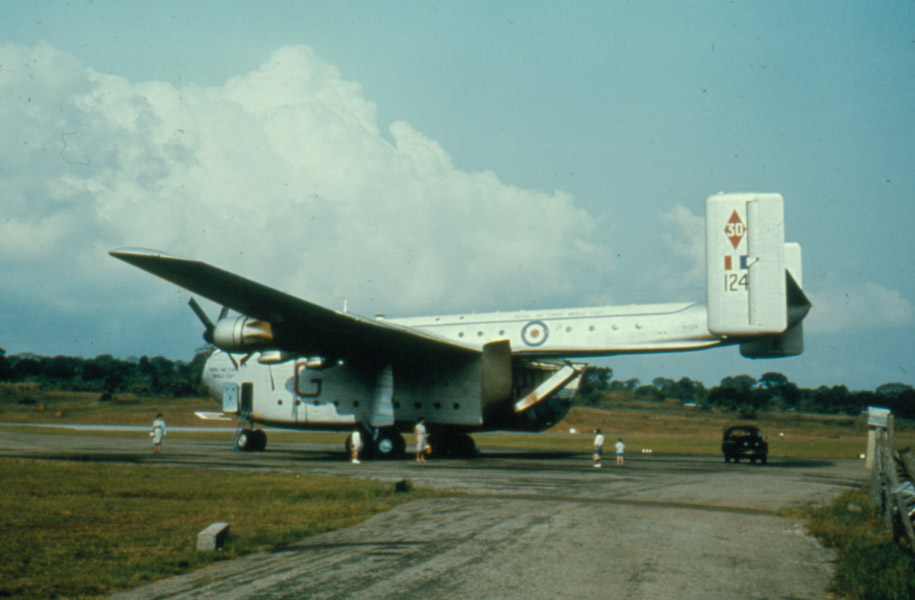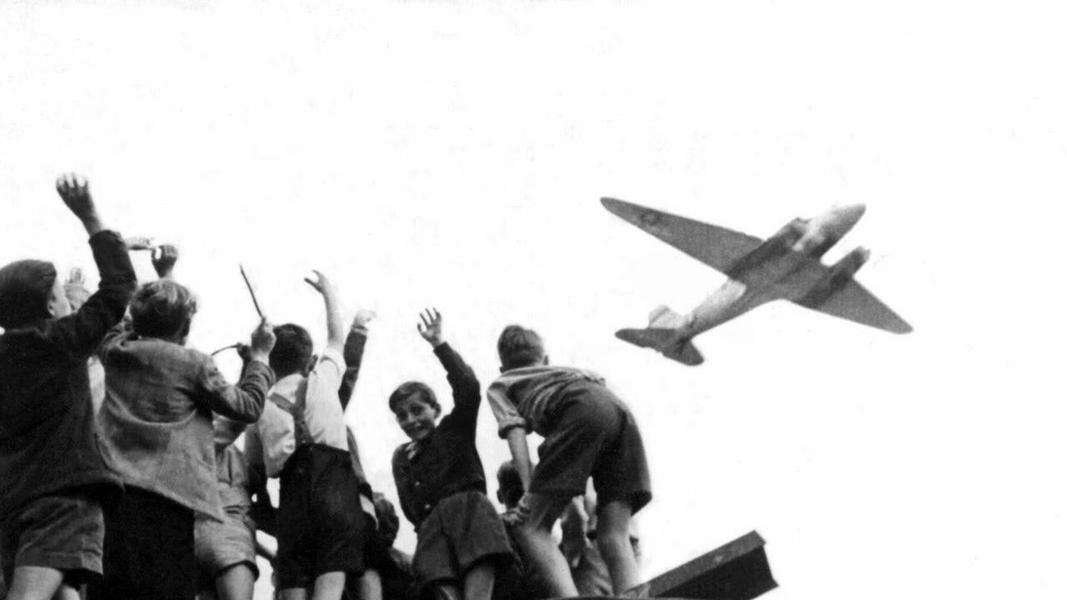C-47s and C-54s.
These were cargo planes, which, when you look at them now
and compare them with the Air Force cargo plane,
you can play basketball in these things.
They're just huge.
And I didn't do the calculations
to reveal how many C-47 loads would fit in
a C-5 or C-17 today,
but it's scores.
It's just phenomenal.
And these guys, at times,
they were flying three or four sorties a day.
The Soviet Air Force would frequently harass
some of the planes.
They were smart enough not to try to shoot any down,
(clears throat) excuse me,
but they would harass planes.
And there were three air corridors that the allied planes
were restricted to fly on,
and they had to fly
not only within that air corridor
but General Tunner figured out a system,
very ingenious back in those days,
considering the state of technology,
to maximize the number of airplanes and tonnage
that could fly into Berlin.
There was a system between 4,000 feet altitude
and 6,000 feet
where every 500 feet
was a flight path.
So you would have 4,000, 4,500, 5,000, 5,500, 6,000,
five flight paths over each of the three air corridors
being flown simultaneously.
A tremendous air controller's nightmare.
But it worked.
American and British ingenuity and fortitude
capitalizing upon that wartime alliance,
as well as our shared common interest and heritage
that we do have.
